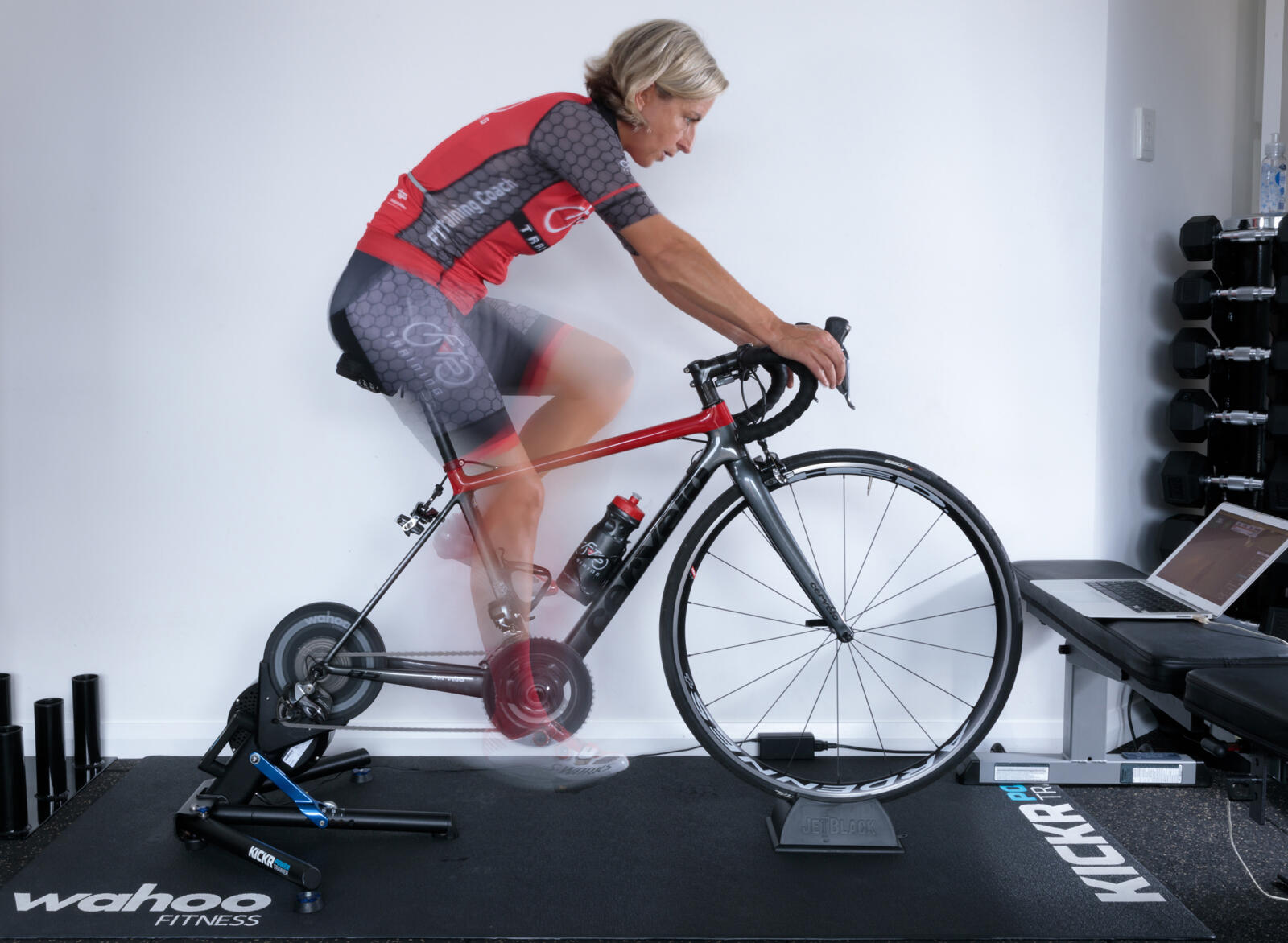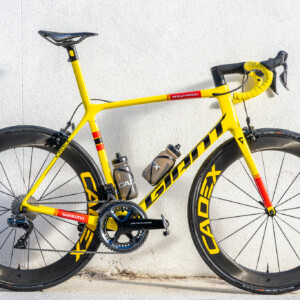To quote the head physiotherapist of British Cycling “All the evidence now is that endurance cyclists can benefit from a training program – not big heavy weights, but some.”
Now who are we to argue with that? The great point he made there was that you will get results even if you don’t lift big heavy weights.

Cyclists of all levels can benefit from a strength training program, which trains both the primary muscle groups and their opposing muscles to achieve balanced strength and muscular development across the body.
Most of us have stronger muscles in the front of our body simply because we use them more. For example, we use the quads for cycling and the biceps for lifting things.
Watch For Overuse
Training only the primary muscles can lead to overuse injuries because the muscles on one side of a joint become much stronger than those on the other side, The weaker muscles may become even weaker and more prone to injury.
A strength program that trains the muscles on the front and rear of the body is a must. This is especially true for most cyclists, who are very quad-dominant and are not utilising the raw power of the strongest muscle group in the body, the glutes.
Due to the non-weight bearing nature of the sport, cyclists can be at a higher risk of developing osteoporosis (brittle bones) as they age. This is especially true if cycling is your only form of exercise. The forces applied through the bones during strength training help to stimulate bone growth and therefore help offset the risk of osteopenia or osteoporosis.
TIP: Two Sessions A Week
I have outlined five excellent body weight exercises that you can start incorporating into your weekly training. Ideally try to complete these exercises three times through in one session, and complete two sessions a week.
You should start seeing improvements after a couple of weeks. Don’t be surprised if there are areas of your body which feel a bit sore after the first session: it is just because you haven’t used these muscles in a long time.
The most important factor is to have some consistency in your strength training. Pick the right exercises and be mindful in your strength sessions.
By ‘mindful’ I mean focus on the area you are supposed to be working. For example, if it is a core exercise then actively brace your core to get it switched on before you start the exercise. Doing this will not only make sure you are getting the most out of every session, but will also help reinforce good form.
You will notice that most of the exercises listed below have you holding the eccentric portion of the movement for a count of three.
Pro tip: Don’t skip this!
I don’t want to get too nerdy, but it is worthwhile highlighting why we are holding the eccentric portion of movement as it is really important:
1. Failure to hold the eccentric portion can actually reinforce any poor movement patterns you may have developed over time.
2. Muscle spindles provide the greatest level of feedback to the brain during the eccentric ‘hold’.
3. It enhances symmetry in the body.
4. You no longer need to do millions of reps to get a great training effect.
Kickstand Squat
This is effectively a single leg squat without the challenges of balance that a true single leg squat would provide. I love this variation as it really highlights any left/right weaknesses and imbalances without overcomplicating the exercise.
Keep your rear heel high so that the sole of that foot is almost vertical.
Hold the bottom position for a count of three.
Repeat six repetitions on each side before swapping legs.
Pro tip: 90% of your weight should be on your front leg. The rear leg is only on the floor to aid in balance and support.
Single Leg Romanian Deadlift
The Romanian Deadlift (RDL) is an exercise which targets the glutes and hamstrings. The single leg version will also work your calf, ankle and feet.
The main difference between a squat and a deadlift in terms of how it looks and feels is as follows. In the squat, you really sit your butt back and down and keep your torso upright, as if you were sitting into a chair.
In the deadlift you keep your hips up high, and hinge from the hips. Your torso will move down towards the floor as if you are bowing to someone.
For the RDL keep the rear leg bent at 90 degrees and hinge at the hips.
Let the hips move back and keep them high. Your supporting leg will have a slight bend in the knee.
Stop when you get to a 90-degree angle at the supporting leg and hip and then hold this position for a count of three. Repeat for six reps on each side.
Pro tip: form tight fists with your hands to help muscle activation of the upper body.
Staggered stance glute bridge
This variation of the glute bridge again targets one leg at a time. One foot is firmly planted into the floor, taking most of the weight, whilst the other foot lightly rests on the heel. The leg with the heel on the floor is only providing stability.
Repeat 8-12 reps on each side.
Pro tip: as you lift your back off the floor focus on tucking your tailbone under. This will prevent excessive arching of the lower back.
Feet elevated plank alternate leg raise
Sorry this doesn’t have a cool name, it just says what it is!
Find a bench or a chair to use for this exercise. Make sure you are right up on your tip toes. Position your hands directly underneath your shoulders. To make it more challenging, position your hands slightly in front of your shoulders (you should feel slightly stretched in this position).
Do not let your hips sag. When you raise one leg, focus on maintaining a rock solid core and square hips (don’t let one side drop) and hold this position for five to ten seconds. Complete six leg raises in total.
Pro tip: Don’t lift your leg too high. Lifting it too high will create excessive arching of the lower spine.
Inverted row
You do not need to be in a gym to do this exercise. You dining room table will also be ok, but do make sure your family aren’t having dinner at the same time, or they might think you are a bit peculiar!
Keeping your knees bent at 90 degrees and your hips high with your glutes switched on, row your body up towards the bar (or table). Keep your neck in alignment with the rest of your spine. Many people butcher this exercise by ‘over-rowing’ – pulling their chest up to touch the bar. The top of the row is actually when the back of your arms are level with your back. Hold the top of the row position for a count of three. Complete six to ten rows.
Pro tip: actively puff your chest out, this will help to not over-row.



